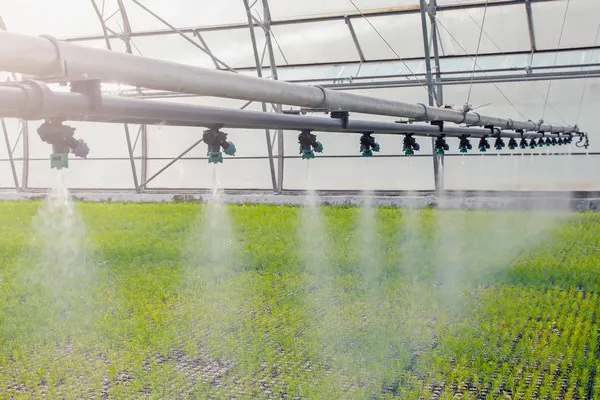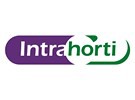From the field, misunderstandings and questions about the negative effect of making water sterile with continuous dosages of disinfection agents are often heard. When disinfecting the irrigation water, ‘good’ bacteria are also eliminated, but is this the reality? With this article, Intrahorti hopes to provide some answers and solve some confusion. First, let’s start with what the differences in water are.
1. Rainwater or other surface water will always contain a considerable handful of microorganisms and maybe other impurities. Rainwater is healthy and clean enough to give to plants.
2. When having sterile water, which is free from all microorganisms like fungi, bacteria, or spores. The process of boiling the water for a specific amount of time and specific temperature will get you sterile water.
3. Often people confuse sterile water with distilled water, the difference is that distilled water does not contain any minerals like salt, calcium, or iron.

Let’s take away concerns
Nevertheless, there are concerns around disinfection products eliminating ‘good’ and ‘bad’ microorganisms, making irrigation water “sterile”. However, clean water will be guaranteed with Intra Hydropure. Clean in a way that it is even safe as drinking water for animals like chickens. Intra Hydropure, an ultra-stabilized hydrogen peroxide, removes organic and microbiological contamination and disinfects the water until the last dripper. Upon arrival at the roots, the product is finished with reacting on pollution and split into the natural elements water and oxygen. Another concern is that by using products or methods to eliminate bacteria and fungi, we don’t have any ‘good’ microorganisms left over in the water. Plant-beneficial bacteria and fungi are in general not living in the water, they live around the roots of a plant (Rasche et al., 2006a,b).

Image the plant as a factory, it excretes huge amounts of substances and uses it to ‘talk’ with surrounding organisms. Bacteria on roots and in the rhizosphere are able to use these organic compounds from the plant and will increase population and expand their metabolic activities. In return, bacteria and fungi will improve plant growth and development by for example fixation of nitrogen, interfering resistance against pathogens, or providing other nutrients. Known plant beneficial microorganisms are rhizobia, mycorrhizae, and endophytes (Mitter et al., 2013). Positive about Intra Hydropure is that the product will not reach the root area, therefore plant beneficial bacteria and fungi are safe in the substrate to do their job.
Plant-athletes
For plants to be able to do their job, performing like Olympic athletes, they need clean water just like animals and humans. Take for example our sewage systems and clean city water. In the old days, many people got sick by drinking bacteria-infected city water. Diseases like cholera and typhus were common diseases caused by contaminated water; the same applies to plants. For both plants and humans, the immune system or intestinal flora has to work hard to stay healthy. Every imbalance can have a huge negative impact on plant growth, development, and yield.
Focus on guaranteed clean water
Groen Agro Control (Dutch research organization) investigated the importance of clean water and has drawn up limit values for good irrigation water that can be used for greenhouse vegetables on substrate (table 1 of March 2013). A limit value is the concentration of a substance in starting water at which, a crop on the substrate, does not suffer any damage in growth or production. The limit values have been drawn up with a safety margin and applied from the start of cultivation. Unless there are no plant pathogen fungi and bacteria.

Using Intra Hydropure ensures these levels are a guarantee. A clean irrigation system and disinfected and clean water keeps you on the right track to get healthy plants.

Intrahorti
Voltaweg 4
5466 AZ Veghel
Netherlands
T +31 (0)413 354 105
F +31 (0)413 362 324
[email protected]
www.intracare.nl
Mitter, B., Brader, G., Afzal, M., Compant, S., Naveed, M., Trognitz, F., & Sessitsch, A. (2013). Advances in elucidating beneficial interactions between plants, soil, and bacteria. Advances in agronomy, 121, 381-445. Rasche, F., Hödl, V., Poll, C., Kandeler, E., Gerzabek, M. H., Van Elsas, J. D., & Sessitsch, A. (2006). Rhizosphere bacteria affected by transgenic potatoes with antibacterial activities compared with the effects of soil, wild-type potatoes, vegetation stage and pathogen exposure. FEMS microbiology ecology, 56(2), 219-235. Rasche, F., Velvis, H., Zachow, C., Berg, G., Van Elsas, J. D., & Sessitsch, A. (2006). Impact of transgenic potatoes expressing anti‐bacterial agents on bacterial endophytes is comparable with the effects of plant genotype, soil type and pathogen infection. Journal of Applied Ecology, 43(3), 555-566.
